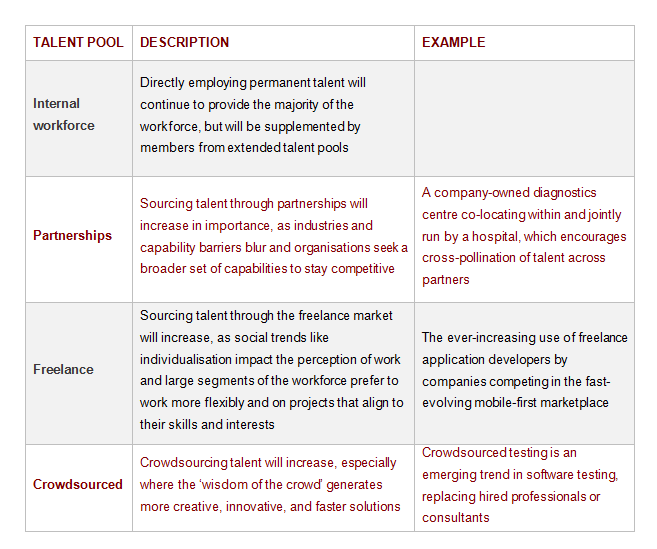What to know about the workforce of the future
- HRM Asia Newsroom

Millennials, many of who hold new expectations and aspirations regarding work, career, and life, are soon to become the dominant workforce segment – but concurrently, economic pressures have forced many people to extend their working lives beyond traditional retirement ages.
|
It has increasingly become a challenge for organisations to identify and acquire the skilled talent they need to deliver new business models.
This is due to a myriad of issues, including aging populations, technological skills shortages, and unpredictable political contexts.
In the midst of this sea change, traditional jobs are being reconfigured and new skills are becoming critical to success, resulting in new requirements for the future workforce.
As companies transform their business models and strategies to realise the opportunities of the digital revolution, they are challenged with defining their workforce for the future. Three interrelated dimensions must be identified for the future workforce:
1. What skills are required?
2. What size of workforce is needed?
3. What shape should it take?
Human skills remain crucial
As technology becomes ever more modular and user friendly, and takes over transactional tasks, differentiated performance will be achieved through uniquely human skills.
Dynamism: Given the speed of innovation, companies need to target talent not only with the specific technical skills required, but also with the capacity for adaptability and curiosity; commercial acumen to identify innovative application opportunities; and the communication skills to tell a compelling story.
Customer devotion: Never before have customers been so well-informed and connected, leaving them with little tolerance for anything less than a stellar experience.
With routine activities increasingly being automated, customers’ expectations are even higher when they need help with sophisticated and complex issues.
By offering superior customer service—which requires an upgrade in capacity for problem-solving, personal accountability, and empathising—organisations can protect against product and service commoditisation.
Behavioural skills: As organisations move from traditional silos and hierarchies with rigidly defined roles to flatter structures and more agile ways of working, skills previously associated with top performance will now become standard or even ‘the minimum requirement.’
Relationship-building: It will be critical to navigate less formal organisation structures, as will influencing skills and the ability to thrive among diversity as workforces extend beyond traditional internal boundaries and comprise talent across multiple generations.
The digitisation of the enterprise is unlikely to deliver competitive advantage unless it is accompanied by a corresponding humanisation. The skills here are not new, but their rise in importance is notable.
What used to be a ‘nice to have’ now becomes critical. Jobs that in the past could be delivered on the merit of technical excellence will no longer be relevant if the job holder does not possess these critical human skills.
It may seem counterintuitive given technology’s pivotal role in everything we do today, but in many ways, technology elevates behaviours and attitudes over technical skills.
In the future, work will be less about ‘using’ technology, and more about ‘interacting’ with technology. Put another way, technical skills become the ‘means to compete’ and human skills become the ‘competitive advantage’.
A new talent ecosystem
According to the World Economic Forum, a widening skills gap is one of the biggest challenges in the fourth industrial revolution, and a robust assessment platform is fundamental to the development of a skills-focused talent strategy.
Organisations have traditionally focused on one battleground for winning the war for talent: the internal workforce comprised of direct employees. The workforce for the future will have a markedly different shape.
Rather than managing only the internal workforce, the best companies will establish and manage an extended talent ecosystem, comprising multiple talent pools and spanning multiple generations.
This ecosystem will provide premium access to the latest skills, ideas, and experiences, allowing companies to adapt quickly to changes in their external environment while effectively managing their fixed costs.
To be effective, all four talent pools of this extended talent ecosystem need to be treated and managed with the same emphasis, meaning that HR strategies need to systematically cover all four talent pools, not only the internal workforce:
The introduction of digital technology means the freeing up of resources will lead companies to re-evaluate the services they offer to their clients. What in the past was considered ‘premium’ will become ‘standard’.
Of course, there will be expectations, it will be crucial that companies ensure that their broader business strategy is well articulated before they try to realise any savings.
Companies must first articulate their digital strategy and build capacity to deliver the digital systems (to convert legacy systems and create new digital capabilities); next, they must ensure the resources are in place to deliver differentiated customer service; only then can they safely consider reducing headcount.







